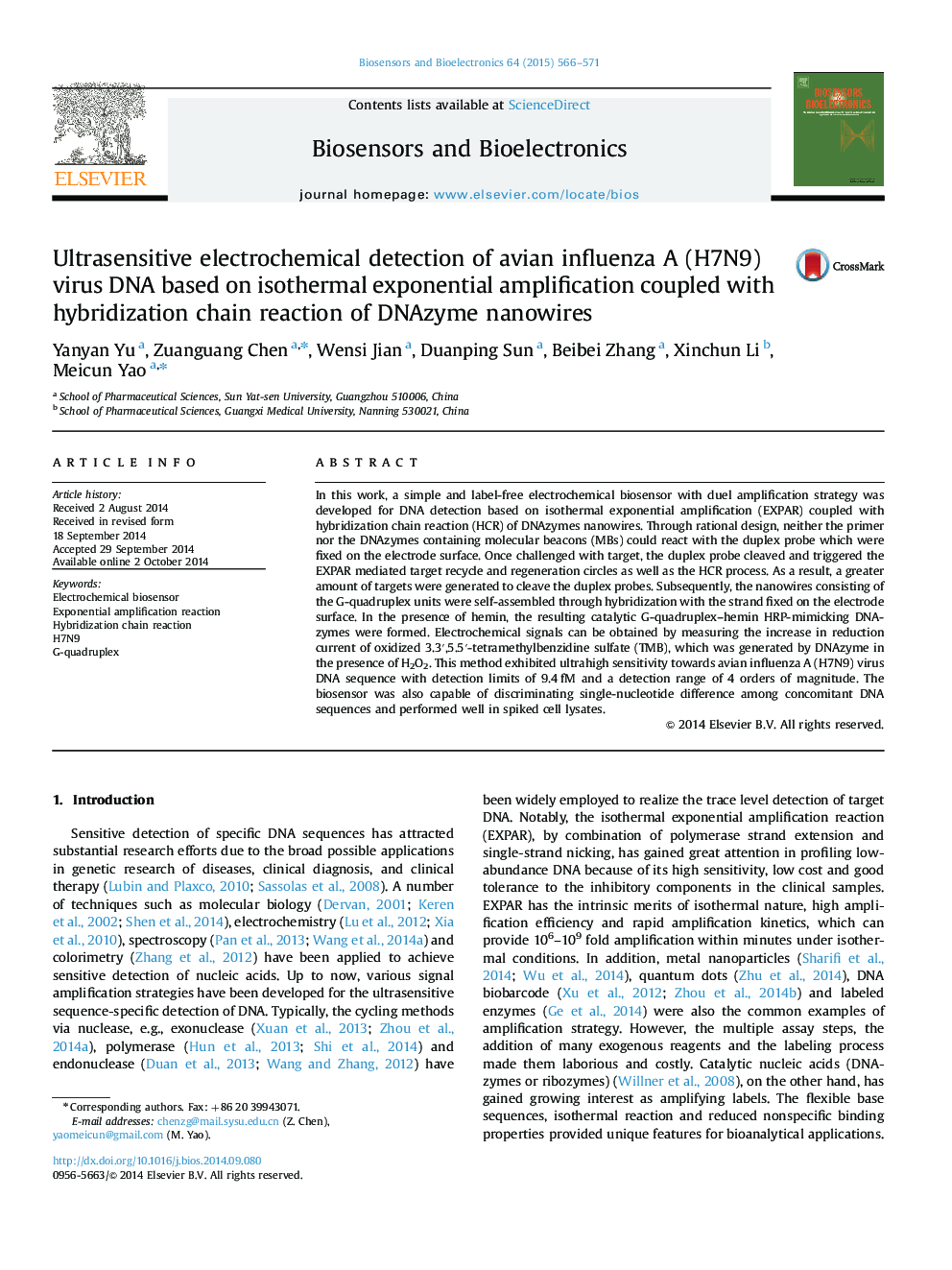| Article ID | Journal | Published Year | Pages | File Type |
|---|---|---|---|---|
| 7233136 | Biosensors and Bioelectronics | 2015 | 6 Pages |
Abstract
In this work, a simple and label-free electrochemical biosensor with duel amplification strategy was developed for DNA detection based on isothermal exponential amplification (EXPAR) coupled with hybridization chain reaction (HCR) of DNAzymes nanowires. Through rational design, neither the primer nor the DNAzymes containing molecular beacons (MBs) could react with the duplex probe which were fixed on the electrode surface. Once challenged with target, the duplex probe cleaved and triggered the EXPAR mediated target recycle and regeneration circles as well as the HCR process. As a result, a greater amount of targets were generated to cleave the duplex probes. Subsequently, the nanowires consisting of the G-quadruplex units were self-assembled through hybridization with the strand fixed on the electrode surface. In the presence of hemin, the resulting catalytic G-quadruplex-hemin HRP-mimicking DNAzymes were formed. Electrochemical signals can be obtained by measuring the increase in reduction current of oxidized 3.3â²,5.5â²-tetramethylbenzidine sulfate (TMB), which was generated by DNAzyme in the presence of H2O2. This method exhibited ultrahigh sensitivity towards avian influenza A (H7N9) virus DNA sequence with detection limits of 9.4Â fM and a detection range of 4 orders of magnitude. The biosensor was also capable of discriminating single-nucleotide difference among concomitant DNA sequences and performed well in spiked cell lysates.
Related Topics
Physical Sciences and Engineering
Chemistry
Analytical Chemistry
Authors
Yanyan Yu, Zuanguang Chen, Wensi Jian, Duanping Sun, Beibei Zhang, Xinchun Li, Meicun Yao,
